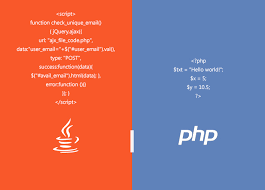Interpreted languages and compiled languages are two different approaches to executing computer programs. Here’s a comparison of the differences between them:
Compiled Languages:
- Compilation Process: In compiled languages, the source code is translated into machine code (binary code) by a compiler. The resulting executable file can be directly executed by the computer’s processor.
- Execution Speed: Since the code is already translated into machine code, compiled languages generally tend to execute faster than interpreted languages.
- Portability: Compiled programs are typically platform-dependent. That means they are compiled to run on a specific type of processor or operating system. If you want to run a compiled program on a different platform, you may need to recompile it for that specific platform.
- Debugging: Debugging compiled programs can be more challenging because the compiled code is not easily human-readable. It requires debugging tools and techniques to identify and fix issues.
- Build Time: Compiled languages often have a longer build time since the source code needs to be compiled into machine code before execution.
Interpreted Languages:
- Interpretation Process: In interpreted languages, the source code is directly executed by an interpreter. The interpreter reads the source code line by line and executes it at runtime.
- Execution Speed: Interpreted languages are generally slower than compiled languages because each line of code is interpreted and executed sequentially at runtime.
- Portability: Interpreted programs are often more portable. Since they rely on the interpreter to execute the code, they can be run on any platform that has the appropriate interpreter installed.
- Debugging: Interpreted languages often provide better debugging capabilities. Since the interpreter executes the code line by line, it can provide more detailed error messages and interactive debugging features.
- Build Time: Interpreted languages have a shorter build time since there is no need for a separate compilation step. The code can be executed directly after it’s written.
It’s worth noting that there are also hybrid approaches, such as just-in-time (JIT) compilation used in languages like Java and C#, which combine elements of both interpretation and compilation for improved performance.
In summary, the main difference between compiled and interpreted languages lies in the way they are executed. Compiled languages are translated into machine code before execution, resulting in faster execution speed but platform dependence. Interpreted languages are executed at runtime by an interpreter, providing better portability and debugging capabilities but at the cost of slower execution speed.
